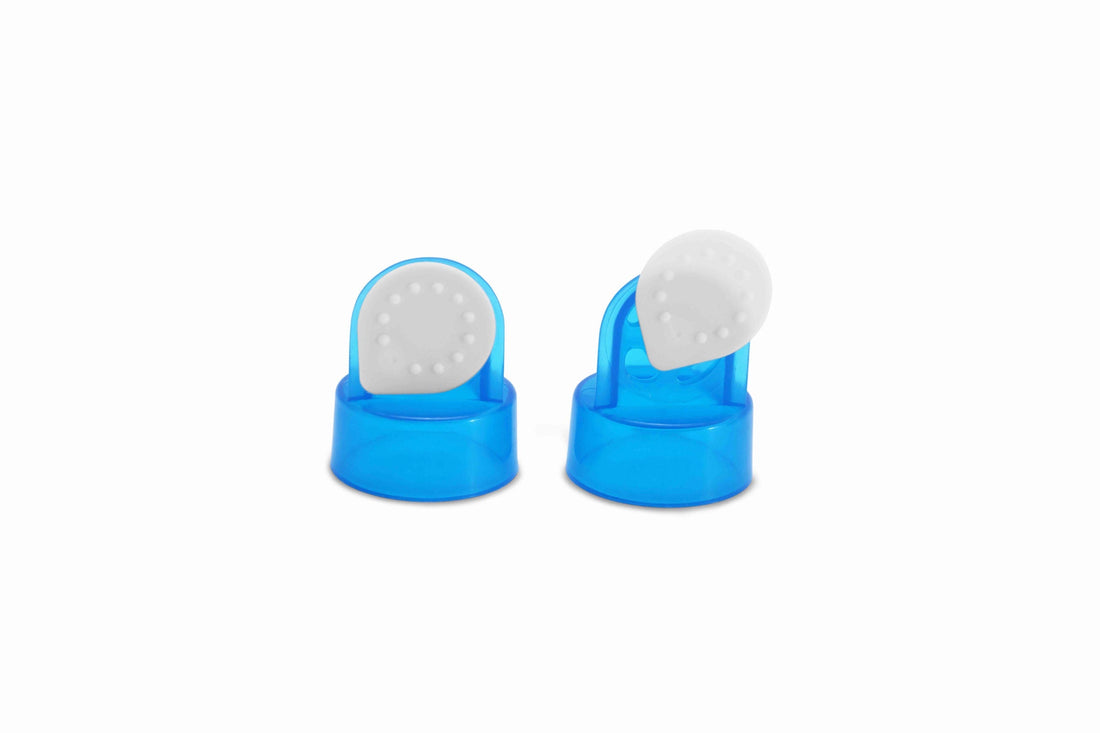Breast pump valves should be replaced on a regular basis. If you've noticed a loss in suction on your breast pump, or a decrease in milk output, the first thing you should check are the valves. How often should you replace breast pump valves? It depends on how often you pump; keep reading to learn more.
Why it's so important to replace breast pump valves
Your breast pump valves (and backflow protector membranes) are made of a flexible silicone material which stretches and releases each time your breast pump sucks in. This creates the suction you feel on your breast which draws breastmilk out. After a while of regular use, the elasticity of these parts wear down. Think of it like a rubber band: after a while, they lose their ability to stretch and snap back into place. The same thing is happening with your breast pump valve; the pump motor pulls at the valve and releases it on each cycle. When the valve wears down, it makes your breast pump less efficient because the motor has to work harder to achieve the same amount of suction with a slack, used valve than it does with a brand new, tight valve.
How do I know when to replace breast pump valves?
Pay attention to things like a decrease in suction, or a decrease in pumped milk output. If you've noticed you're getting less milk than before or if you're feeling like your pump isn't as strong as it used to be, a good first thing to check are the valves (especially if it's been a couple months since they've been replaced). If there's a tear in your valve, it's time to replace it.
How often should you replace breast pump valves?
How often you should replace breast pump valves depends on how frequently you pump and what settings you use. It's a bit of a range. We'll give a range for daily expressing (1 time per day) and frequent expressing (more than once a day). You should pay close attention to how your pump is performing within these ranges.

Duck valves (1-3 months)
Once daily expressing or less: You should expect to replace these once-piece valves every 2-3 months. Frequent expressing: You'll need to replace these about every 3-4 weeks.

Valve membranes (2-8 weeks)
The valve membranes tend to not last quite as long as the duck valves. There is less material in these (which means less waste!) so they wear out more quickly. You'll want to have plenty of extras on-hand. :)
Once daily expressing or less: You should expect to replace the membrane flap about once every 6 weeks.
Frequent expressing: You'll need to replace these about every 2-4 weeks.
Prolonging the life of your Spectra breast pump valve
There are some things you can avoid to make it so your Spectra breast pump valve lasts longer, and will need to be replaced less often: avoid washing the valves in the dishwasher, and avoid frequent sterilisation of the breast pump valves. Avoid steam-sterilising in the microwave. The intense heat of these methods can cause the elasticity to wear down much more quickly. Washing them with warm, soapy water should be enough to clean them. Unless your doctor has stated otherwise, you don't need to sterilise on a daily basis; just before first-time use. Make sure you remove valves from breastshields everytime when washing, and valve membranes from valve heads before washing. When removing duck valves, don't pull from the bottom because it's easier to damage them that way; grab it at the base and gently rock back and forth to loosen the valve from the breastshield.
Still not sure?
If you need help figuring out how often you should replace your Spectra breast pump valve, or if you're wondering if replacing the valves will fix a problem you're having with your breast pump, you can
contact customer support or message us on Facebook. We're here to help :)





